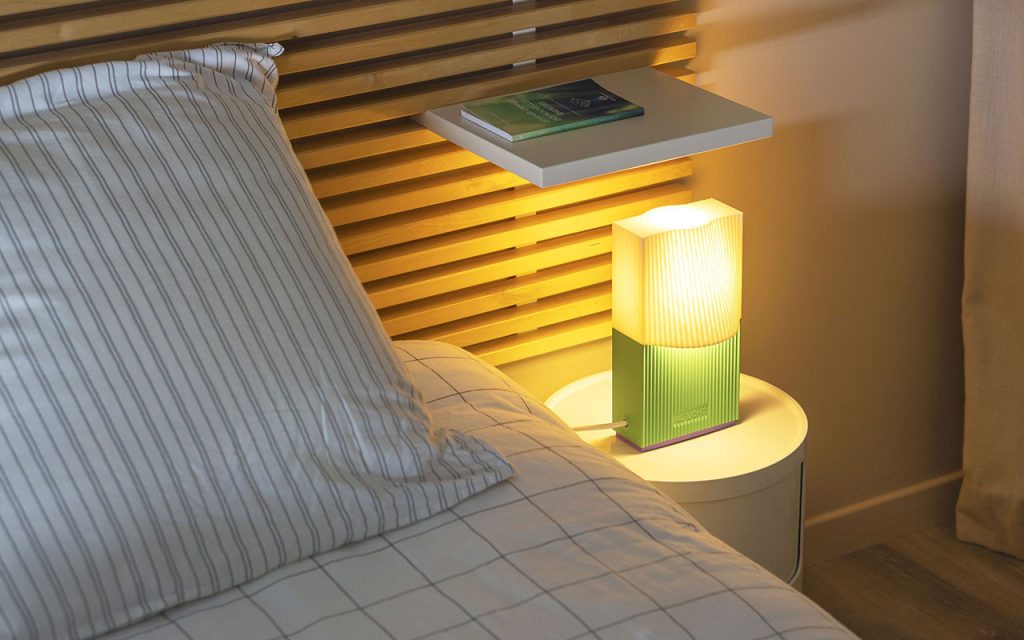ALT design, based in France, have released a light made from polylactic acid (PLA) made from corn starch and additive manufacturing. Alexandre Touguet and Lise Rissel designed ALT Light which features a rectangular base transitioning into a flared, sculptural top reminiscent of traditional lampshades. Vertical ribbing creates a dynamic texture while catching light to enhance the visual appeal. With versatility in mind, the lamp is available in a range of sizes, including a small wall light, medium and large table lamps. There is also a choice of translucent or transparent finishes, which impact how the lamp diffuses light.
Leveraging a key strength of additive manufacturing the lamps are produced on demand allowing customisation, with customers selecting colours and finishes. No glues or additives are used during construction. Lamps are then distributed by post using minimal packaging. This method of production also eliminates waste as retailers are not required to hold stocks, but of course, it requires patience from purchasers, a commodity that is often in scarce supply! However, direct distribution in this case enables savings to be passed on to the consumer, with lamps starting at just over AU$200.
3D printing can also introduce slight defects during the production process but, in this case, the manufacturer claims these are barely noticeable and do not impact the aesthetic appeal of the lamps. It is reassuring to see how much effort has been invested into improving the aesthetic appeal of these lamps, as these considerations are often outweighed by more practical concerns when designing environmentally friendly products. Products that fail to appeal to consumers do not sell and simply waste resources.
Polylactic acid (PLA) was first made by DuPont in the 1930s and has, since the 1990s, becoming a popular bioplastic. In fact, PLA is now the most widely used bioplastic, accounting for a quarter of the market. Apart from its use in packaging and for single-use items such as cutlery it has become the preferred choice among 3D printing hobbyists as it has a low melting point (around 150°C), while offering good layer adhesion and relatively high strength. Although its relatively low heat resistance (110°C) often limits its application as does its brittleness. It is therefore encouraging to see the material used to make a mass-produced consumer product.
Made from fermented starch obtained from corn, sugarcane or sugar beet PLA can be designed to be biodegradable or long-lasting. Although PLA is unsuitable for home composting and will only biodegrade in an industrial facility, where humidity and temperature can be maintained. However, as most PLA is made from food crops it is often criticised as it potentially increases competition for arable land and could drive up food prices. In reality, very little land is actually used to make PLA so this argument is usually advanced by those interested in supporting the established petrochemical regime.
When making claims about the environmental credentials of products it is important to consider the full lifecycle impacts. In this case, relatively small amounts of filament are transported to Nante in France where they are melted in a 3D printer (most likely relatively inefficiently) with the final product shipped in small quantities by mail throughout the world. Does this produce a better environmental impact when compared with traditional methods?
